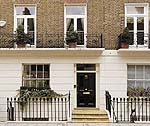Stamp duty revenue rises by 40%
New figures show that total stamp duty revenue from residential property sales rose by 40% in 2006/07 to a record £6.4bn.


Over the past five years annual residential stamp duty revenue has more than doubled with a 140% rise from £2.7bn in 2001/02 to £6.4bn in 2006/07. Figures from Halifax show that higher stamp duty bands (on sales of £250,000 and over) generate nearly 80% of total residential stamp duty revenue. Residential stamp duty revenue raised at the higher stamp duty bands (3% on sales between £250,000 and £500,000 and 4% above £500,000) accounted for 79% of all residential stamp duty revenue in 2006/07, at £5.1bn. Five years ago in 2001/02, the higher stamp duty bands contributed 61% of total residential stamp duty revenue. More than nine-tenths (92%) of the rise in the total annual residential stamp duty take over the five years has been due to an increase in the amount raised at the higher stamp duty bands. The South of England contributed 73% of all residential stamp duty revenues in 2006/07 at £4.7bn, led by £1.7bn of stamp duty revenue from London (27% of the UK total). Two other regions generated stamp duty revenue of at least £1bn ? the South East (£1.4bn) and the South West (£1.0bn). The higher stamp duty thresholds - £250,000 and £500,000 ? have been unchanged since their introduction in 1997 despite a 191% increase in the average house price over the period. The 1% stamp duty threshold was increased from £60,000 to £120,000 in March 2005 and then rose by a further £5,000 in March 2006. However, even these increases have not kept up with the pace of house price inflation. House prices have increased by 222% since March 1993 (when the 1% threshold was raised to £60,000) compared with a 108% rise in the stamp duty threshold. If the higher stamp duty thresholds were increased in line with house price inflation since July 1997, the £250,000 threshold would now stand at £729,000 and the £500,000 would be £1,458,000. If the lowest stamp duty threshold had been increased in line with house price inflation since March 1993, it would now stand at £193,000. This would be £68,000 above its current level of £125,000. Halifax estimates that 25% of properties in the UK, 5.4 million, are now valued above the £250,000 stamp duty threshold; and 900,000 (4%) are valued above the £500,000 threshold. London and the South East account for 60% of homes valued above £250,000 and 72% of homes valued above the £500,000 threshold. Martin Ellis, Halifax Chief Economist commented: ?The revenue generated from stamp duty on property purchases has soared as governments of both political parties have failed to link thresholds to house price inflation. We call on the government to raise all the stamp duty thresholds to reflect the increase in house prices over the past decade and to commit to doing so in the future.?
Exquisite houses, the beauty of Nature, and how to get the most from your life, straight to your inbox.
Country Life is unlike any other magazine: the only glossy weekly on the newsstand and the only magazine that has been guest-edited by His Majesty The King not once, but twice. It is a celebration of modern rural life and all its diverse joys and pleasures — that was first published in Queen Victoria's Diamond Jubilee year. Our eclectic mixture of witty and informative content — from the most up-to-date property news and commentary and a coveted glimpse inside some of the UK's best houses and gardens, to gardening, the arts and interior design, written by experts in their field — still cannot be found in print or online, anywhere else.
